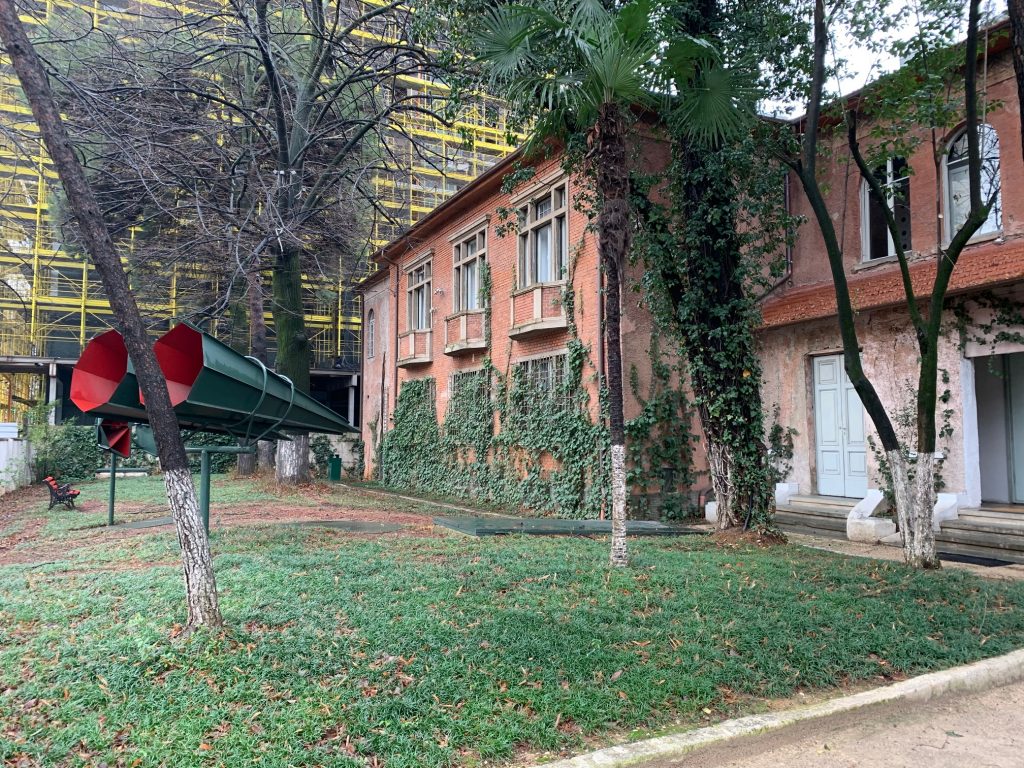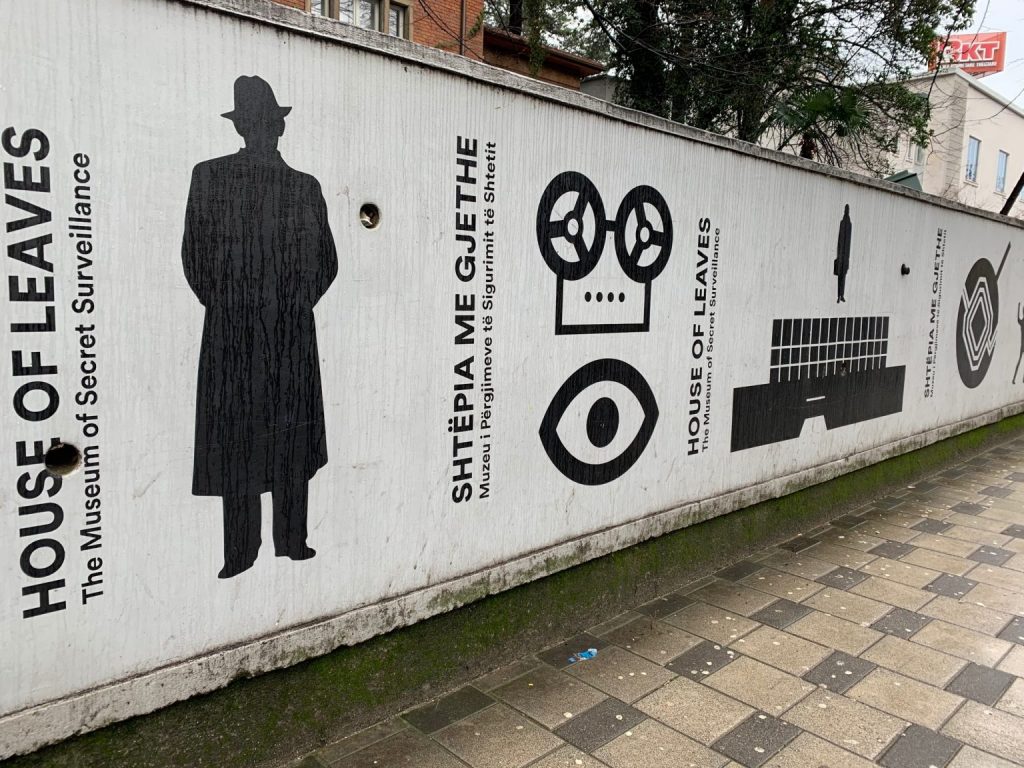
Please Follow us on Gab, Parler, Minds
It’s easy to walk past the House of Leaves in the center of Tirana. But inside the 31 rooms that comprise this museum housed in a rather innocuous-looking brick building are exhibits that are both fascinating and disturbing.
Last year, the House of Leaves received the 2020 Council of Europe Museum Award from the Paris-based Culture Committee of the Parliamentary Assembly of the Council of Europe (PACE). Robert Rampi, a representative for the museum award committee, was quoted as saying, “…we need to support and encourage smaller museums with less resources in openly dealing with the wounds of the past. The “House of Leaves” is a very moving museum run on a very low budget by enthusiastic staff. Today, society is confronted with the widespread use of high-tech devices and threats of mass surveillance through facial recognition, access to private data, etc. This museum is evocative of the darkest days of the past which should not be forgotten.”
And he is right.

Remembering those who suffered
A sign at the front door is an instant reminder of the building’s dark past: “This museum is dedicated to those innocent people who were spied on, arrested, prosecuted, convicted and executed during the communist regime”.
Within the walls of the House of Leaves, the much-feared Sigurimi (state secret police at the time) spied on and recorded private conversations of its citizens and foreign nationals to collect evidence of actual and/or perceived anti-government activities for the 50 years (1944-1991) of the repressive, Stalinist communist regime. The “evidence” collected was used to justify the arrest, imprisonment, torture and punishment of many innocent Albanians.
A few steps further into the museum is a Hoxha slogan that hints to what is in store for a visitor—State Security is the sharp and clear weapon of the Party, because it protects the interests of the people and our socialist State against internal and external enemies.
Inside the walls
The ivy-covered House of Leaves was built in 1931 by Dr. Jani Basho, who my tour guide explained helped build the hospital system in Albania. It was also occupied by the Gestapo during the German occupation of World War II before the Sigurimi moved in.
One of the first rooms includes detailed written instructions from the regime on how best to torture a suspect to get a “full confession”. Publicly, dictator Enver Hoxha claimed that interrogations ended in 1948 when Albania broke from Yugoslavia because there was no longer a threat from Titoist agents, But this was a lie.
It is clear from the eerily well-preserved original spying equipment and recordings that interrogations and torture continued here throughout the communist regime, into the early 1990s.
The museum does an impressive job of documenting the interception of phone, mail and other communications. Communist propaganda movie loops produced in Kinostudio also give a visitor a glimpse of the media control exercised during this time and how they reinforced the perception that there were internal and external enemies that threatened the existence of Albania.
The equipment and techniques used by the Sigurimi to gather information about suspects were surprisingly sophisticated for its time, especially considering the desperate economic situation and isolation of the country at the time. The State monitored its people with secret listening devices that captured the intimate conversations among family members, songs or even just a suspicious word from every home, at any time.
In another room, a long list of names are etched on the walls from ceiling to floor of the 18,000 Albanians who were prosecuted and charged, and another 5,000 who were executed, for political crimes. This is joined by photos and emotional testimonies from sensational trials of innocent citizens by the government, a strategy that ensured its iron grip control.
In addition, when someone was declared an enemy of the state, his or her entire family was punished. They might be persecuted, not allowed to go to university, denied work, or suffer any multitude of suppressive acts.
And it wasn’t just the citizens of this small country that were being spied on. Displays of the original devices used to bug hotels and embassies and intercept cables show how those working in the House of Leaves monitored foreigners and diplomatic staff.
Upstairs, the room once used as the maternity clinic laboratory was converted into a darkroom. Here you can see where the secret police developed photographic film, steamed open envelopes, examined correspondence for invisible ink that might hold messages considered a threat, and tested materials for poison or radioactive material.

More about the Museum Prize
The Council of Europe Museum Prize has been awarded annually since 1977. It is given to museums deemed to be making a significant contribution to the understanding of European cultural heritage, the promotion of respect for human rights and democracy, bridging cultures, overcoming social and political borders, broadening visitors’ knowledge and understanding of contemporary societal issues and exploring ideas of democratic citizenship.
Winning museums such as the House of Leaves are presented with a certificate and a bronze statuette by the Spanish artist Joan Miró to keep for a year. Other winners of the Council of Europe Museum Prize include the War Childhood Museum in Sarajevo, Bosnia and Herzegovina (2018); and the Caribbean Centre of Expressions and Memory of the Slave Trade and Slavery in Guadeloupe, France (2017).
CDMedia is being de-platformed and obviously too effective! We need your support to put more reporters in the field! Help us here!
- Telegram Valued At $30 Billion As Durov Passes 500 Million Users
- Will Russia Aid The New American Confederacy?

